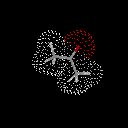|
|
||||
  |
Feel free to look at the syllabus or to scroll through the list of readings. Feel free to examine the syllabus for the class. Sample tests from previous semesters can be found here. The files linked to below are pdf documents. To download them, please right click (or control click if you are a one-button mouse user) and choose the option that allows you to save the file to your hard dirve. Day 1: Introductions and the Nature of Science Chapter 1 Sections 1.1-1.4, 1.13 Review Questions: 1, 3, 4 Day 2: Measurement. If you have ever doubted the importance of keeping track of your units, the story of the "Gimli Glider" might set you straight (The url keeps changing so you may need to search for Gimli Glider at the CBC digital archives. Week 2 Day 3: Here is an exmple of the group activity that we did to accompany our look at the topics in Chapter 1. Chapter 1 Sections 1.10 and 1.11. Review Questions: 9, 10 Days 4 and 5: 2.1 through 2.4 (pp. 40-50). The early laws of chemical composition and how atomic theory can acount for these laws. This activity helps to demonstrate how mass ratios arise from atom (or object) ratios. Review Questions 1-3, 6-13 Week 2 Days 6, 7, and 8 canceled due to illness and school closing Week 4 Day 9: Canceled due to school closing Day 10: Atomic Structure Another activity that we did in class. This one examines some basics of nuclear structure, and helps accustom us to the symbols we use when describing atoms. The activity was designed to accompany Chap 3 sections 3.1,3.4-3.5. Day 11: Quiz 1 Week 5 Day 12: After finishing our look at atomic symbols, we moved on to describing the electronic structure of an atom. That is, where do we expect to find an atom's electrons. Chap 3 sections 3.6-3.8 Day 13: After finishing our look at atomic symbols, we moved on to describing the electronic structure of an atom. That is, where do we expect to find an atom's electrons. Chap 3 sections 3.6-3.8 Day 14: Periodic Table and the Arrangement of Electrons in an Atom. Chap 2.5, 3.7, 3.8, 4.1 Week 6 Day 15: We used the periodic table to predict stable electron configurations for ions, and drew a couple of Lewis structures for atoms an ions. 4.1 The Art of Deduction: Stable Electron Configurations Day 16: Now that we can predict stable electron configurations, we used that information to predict ionic formulae and to predict simple formulae for covalently bonded atoms. activity 4.5 Formulas and Names of Binary Ionic Compound (skipping nomenclature) Day 17: Quiz 2 (on everything since the last quiz) 4.2 Lewis (Electron-Dot) Symbols Week 7 Day 18: Shape 4.12 Molecular Shapes: The VSEPR Theory Day 19: Test 1 On Material up through Day 17 Day 20: Shape, polarity and Properties 4.13 Shapes and Properties: Polar and Nonpolar Molecules Week 8 Spring Break Week 9 Day 21: Bonding Review. Review ionic interactions, covalent bonds, and polar covalent bonds. Start an activity to discuss polar bonds and polar molecules 4.1-4.6 Ionic Interactions and Covalent Bonds Day 22: Review steps used to determine whether a molecule is polar, and finish the activity begun on Monday Day 23: Canceled Week 10 Day 24: Intramolecular and Intermolecular forces 6.1 Solids, liquids, and Gases Day 25: Intramolecular and Intermolecular forces activityscreen shots 6.1 Solids, liquids, and gases Day 26: Good Friday Week 11 Day 27: Dissolution Reactions 6.4 Forces in Solution Day 28: Dissolution and Precipitation Reactions screen shots 6.4 Forces in Solution Day 29: Review Material Since Last Test Week 12 Day 30: Test Day 31: Class Canceled Day 32: Chemical Equations, Mole, and Mass Relationships Chap 5, 5.3 Avagadro's Number and the Mole Week 13 Day 33: Patriots Day, No Classes Day 34: Chemical Equations, Mole, and Mass Relationships Chap 5, 5.3 Avagadro's Number and the Mole Day 35: Chemical Equations and Energy
Discuss energy, work. Define First and Second Laws. Define and dicsuss PE and KE, and their interconversion. Week 14 Day 36: Stoichiometry and Energy Chap 15.2 Day 37: Quiz 4 15.9 Convenient Energy: Electricity Day 38: Electric Power Generation
Chap 8.1-8.3 Electrochemical reactions and the generation of power via batteries. activity Week 15 Day 39: Electric Power Generation and Fuel Cells Chap 8.1-8.3, 15.14 Electrochemical reactions and the generation of power via fuel cells. activity Day 40: Nuclear Reactions Chap 11.2, 11.8, 15.10, 15.11 Day 41:
Week 16 Day 42: Review |
|||
|
|
|
|||